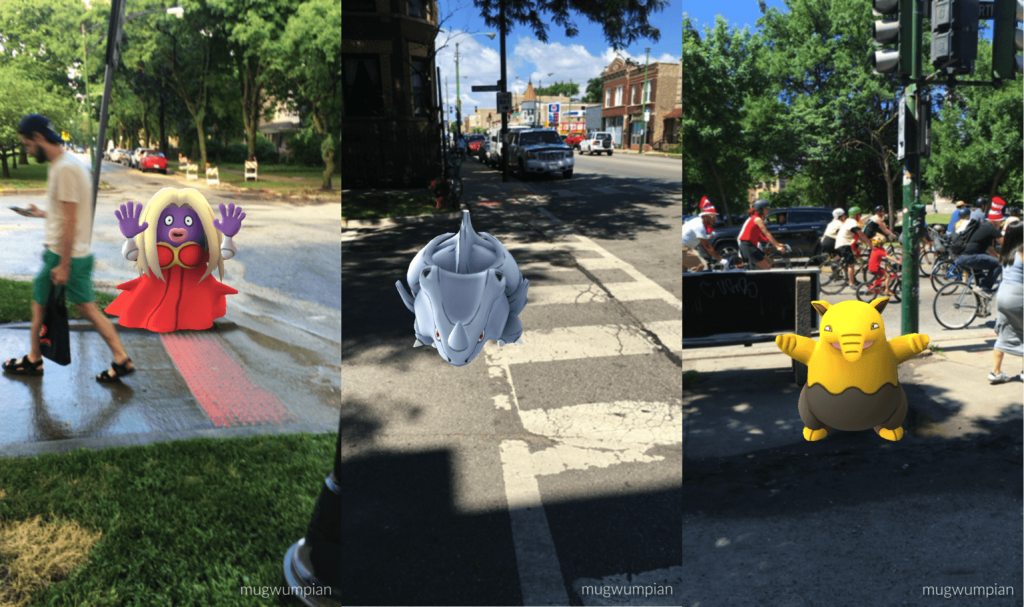Nintendo – the early pioneer of portable gaming with its Gameboy and whose second act was the rampant success of its Wii motion-gaming consoles – seemed like its time had come and gone as its revenue plummeted and its DS handheld was eclipsed by smartphones. Until last week, when its Pokémon Go game appeared in mobile app stores and has gone ballistic – taking Nintendo’s share on a wild ride too. After climbing 10% on Friday, Nintendo’s shares surged 24.5% on Monday alone, the stock’s best day since 1983, adding US$7.5bn to its value.
It’s also a resurgence of Pokémon – a game about catching these imaginary characters that appealed only to kids and were the most successful video game franchise after Nintendo’s own Mario franchises. Both games were initially published for Gameboy, the handheld device that launched Nintendo as a gaming powerhouse when it was released in 1989. After its Mario games made Nintendo a household name – for the ardent kids and teenagers who played them – the company went into a decline as the more powerful Sony PlayStation and Microsoft Xbox ruled the console market.
Until the motion-based and more intuitive Wii came out in 2006, and made TV-based gaming cool for a different bunch of people, and launched the so-called casual gaming market. Suddenly, playing games wasn’t just for the hard-core gamers on PS or Xbox.
As much as the Wii was a unexpected success, so too Pokémon Go has been a sudden breakout. It uses augmented reality (AR), a way of overlaying information on the real world using a smartphone. Previous AR apps and games haven’t taken off, although they offered useful experiments in how such extra information could be useful. A technician fixing an air-conditioning unit could see an overlay of the product he’s working on; while a pilot could see their flight path displayed, as well as icons for other aircraft and bold depictions of the runway to land on.
The first such AR game called Ingress, and released in 2012, was a geek darling but it never achieved the kind of success that Pokémon Go has. Both were created by Niantic Labs, which was spun off from Google six years ago. Both use the masses of real-world mapping data Goole Maps has accumulated and your smartphone’s GPS to know where you are, and what direction you’re facing.
The point of the game is to capture Pokémon, the little creatures that so many of us spent our childhood chasing. Now, the AR overlay turns the real world into a gaming arena and converts all us into casual gamers. Places like museums, statues or monuments are called PokéStops and offer extra items, just like traditional gaming. There are even water-based creatures, giving lakes and fountains new appeal.
Pokémon was released in 1995 – a playing card version followed, as well as a series of figurines – and making it a game well-known to several generations of gamers. Hence the popular appeal, and its reported career earnings of $40.5bn.
As is the strange nature of how intermingled our online and offline lives have become, there are already instances of people being mugged (based on the GPS location of their mobiles), someone tracking a virtual Pokémon and finding a real corpse, and game-obsessed youth wandering into traffic-filled roads.
But more than anything else, it’s a reminder of the enduring quality of simple and compelling storytelling and good old gaming.
Perhaps the quirkiest aspect of Pokémon, is its origin. Its creator Satoshi Tajiri liked collecting insects. It’s a delicious irony that such an old-world, forgotten pastime has given rise to the hippest, digitally interactive game. It’s also heartening to see Nintendo resurrecting itself yet again, when its fortunes seemed dead-and-buried, proving that innovative thinking is more powerful than any powerful console or marketing budget.
This column first appeared in Financial Mail
